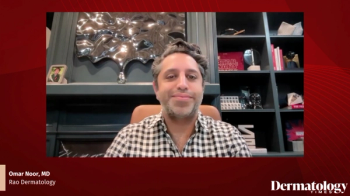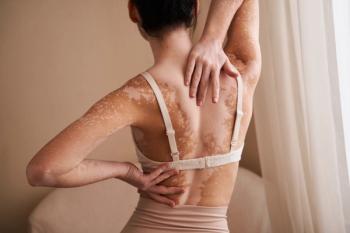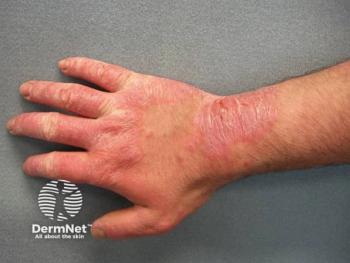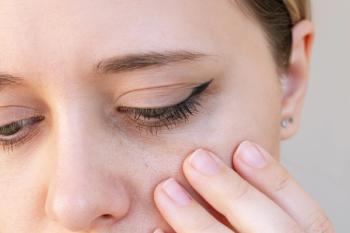
- Dermatology Times, July 2025 (Vol. 46. No. 07)
- Volume 46
- Issue 07
Skin Quality: Defined by Global Consensus, Delivered Through Personalized Treatment
Key Takeaways
- Skin quality is now a multidimensional concept defined by the Emergent Perceptual Categories (EPCs): firmness, surface evenness, tone evenness, and glow.
- The EPC framework provides a universal structure for assessing and improving skin quality across demographics and treatment modalities.
Aesthetic medicine embraces a holistic approach to skin quality, defining it through measurable categories that enhance personalized treatment strategies.
Skin quality has always played a central role in aesthetic medicine, influencing how beauty is perceived, experienced, and treated. In today’s practice, this role has expanded: holistic, patient-centric approaches are now paired with growing demands for clarity, precision, and personalization. Clinicians are expected to deliver harmonious, natural outcomes and understand the distinct functional and structural contributors to skin quality, from dermal architecture to surface reflectivity, that collectively shape perception. As aesthetic care evolves, skin quality is no longer an abstract ideal but a multidimensional concept requiring a structured and clinically meaningful definition.
In 2021, the growing need for structure and clarity led to the publishing of a peer-reviewed consensus by a multinational board of experts in dermatology and aesthetic medicine. This collaboration helped better define skin quality through 4 clinically relevant and perception-driven categories, known as the Emergent Perceptual Categories (EPCs): firmness, surface evenness, tone evenness, and glow.1 There are no standardized criteria for good skin quality. To establish a consensus for good skin quality parameters and measurement and treatment options, a virtual skin quality advisory board consisting of a global panel of highly experienced aesthetic dermatologists/aesthetic physicians was convened.
A total of 10 dermatologists/aesthetic physicians served on the advisory board. A modified version of the Delphi method was used to arrive at consensus. Members accessed an online platform to review statements on skin quality criteria from their peers, including treatment and measurement options, and voted to indicate whether they agreed or disagreed. Statements that did not have agreement were modified and the members voted again. Consensus was defined as: strong consensus = greater than 95% agreement; consensus = 75% to 95% agreement; majority consent = 50% to 75% agreement ; no consensus = less than 50% agreement. There was strong consensus that good skin quality is defined as healthy, youthful in appearance (appearing younger than a person’s chronological age).
These categories provide a universal framework for assessing and improving skin quality across patient demographics, anatomical regions, and treatment modalities. Grounded in real-world practice, the EPCs transform a growing list of skin-related terms into a unified framework designed to guide description, diagnosis, communication, and clinical decision-making.
EPCs: The Foundation of a Shared Clinical Language
Each EPC encompasses measurable, meaningful attributes commonly used by physicians and patients:
- Surface evenness: Fine lines, roughness, scarring, and enlarged pores
- Tone evenness: Pigmentation, redness, and blemishes
- Firmness: Elasticity, hydration, and tautness
- Glow: Luminosity, vibrancy, and radiance
Although recent initiatives have introduced alternative vocabularies or attribute lists for describing skin quality, these descriptors map directly onto the EPC framework. In doing so, they reinforce the pioneering EPC model definitions of skin quality. By echoing many of the these same parameters, such efforts indirectly validate the structure and logic of the EPCs already in clinical use. Unlike newer systems focused on classification, the EPCs were created to guide real-world clinical decisions and are already linked to treatment protocols, product strategies, and objective measurement studies.2 This highlights the EPCs’ strength and adaptability: They do not compete with new language—they organize it.
Further reinforcing the scientific validity of the EPC structure, Roessle and Kerscher published an article describing their work to establish quantitative reference values for skin firmness based on cutometry and corneometry data from 300 White women.2 The authors are currently conducting additional analyses to address the other EPCs. This research represents an early, foundational step in linking all 4 perceptual categories to objective measurements, reflecting an ongoing, structured commitment to evidence-based development.
A Personalized, Multimodal Treatment Algorithm
In 2024, the EPC model evolved into a global treatment algorithm, developed by 12 international key opinion leaders across dermatology and aesthetic medicine. First presented at the Aesthetic & Anti-Aging Medicine World Congress in Monaco, this algorithm will be published in full in 2025. This marks the first algorithm to directly link skin quality outcomes to single and multimodal treatment strategies, including biostimulatory fillers, cohesive hyaluronic acid gels, botulinum toxins, energy-based devices, and topical approaches.
The Merz Aesthetics portfolio reflects these multimodal needs. Each product aligns with one or more EPCs and offers the flexibility to tailor treatments to anatomy, skin type, ethnicity, age, and personal goals. The algorithm translates perceptual diagnosis into a scalable, practical tool rather than a retrofitted add-on.
A Framework Built to Endure Time
As interest in skin quality grows through new tools, digital indices, and refined descriptors, clinicians, researchers, and patients benefit from a shared, scalable, and scientifically validated foundation. Increasingly, patients are not only seeking natural-looking results but also expecting practitioners to explain and personalize treatments based on identifiable skin needs.
The EPC framework has proved its value across:
- Peer-reviewed literature and global key opinion leader consensus
- Clinical research data, including from objective measurement studies
- Real-world practice in diverse patient populations
- Structured treatment planning using existing product portfolios
Rather than introducing parallel definitions, the field can now converge on the EPC framework and build from there.
References
- Goldie K, Kerscher M, Fabi SG, et al. Skin quality – a holistic 360° view: consensus results. Clin Cosmet Investig Dermatol. 2021;14:643-654.. doi:10.2147/CCID.S309374
- Roessle A, Kerscher M. Objectification of skin firmness: in vivo evaluation of 300 women in relation to age. J Cosmet Dermatol. 2025;24(1):e16773. doi:10.1111/jocd.16773
Martina Kerscher, MD, PhD, professor of dermatology and head of the Division of Cosmetic Sciences at the University of Hamburg in Germany, is an advisory board member, consultant, and clinical trial investigator for Allergan/AbbVie, Croma, Galderma, Ipsen Innovation, Merz Aesthetics, Neauvia/Matex, and Nordberg. Kate Goldie, MBChB, of Goldie Aesthetics and Wellness in London and the Cotswolds, England, is a consultant and speaker for Merz Aesthetics. Milton Moore, MD, dermatologist and associate professor at Liv Dermatology & Aesthetics and the University of the Incarnate Word School of Osteopathic Medicine in San Antonio, Texas, is a consultant for Merz Aesthetics. Je-Young Park, MD, of Apgujeong Oracle Dermatology Clinic in Seoul, Korea, is a consultant and speaker for Merz Aesthetics. Bianca Viscomi, MD, a dermatologist at Bianca Viscomi Clínica Dermatológica in São Paulo, Brazil, is a Merz Aesthetics Global Speaker. All authors participated in the 2024 Skin Quality Expert advisory board.
Articles in this issue
5 months ago
Dermatology Times July 2025 Print Recap5 months ago
Is AI Transforming Skin Care?5 months ago
The Value of RAD, According to Clinicians5 months ago
A New Canvas for Conversations in DermatologyNewsletter
Like what you’re reading? Subscribe to Dermatology Times for weekly updates on therapies, innovations, and real-world practice tips.



















